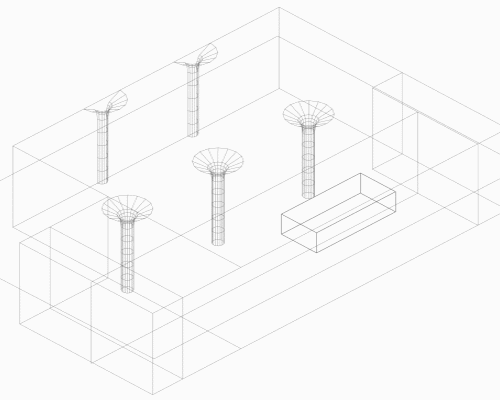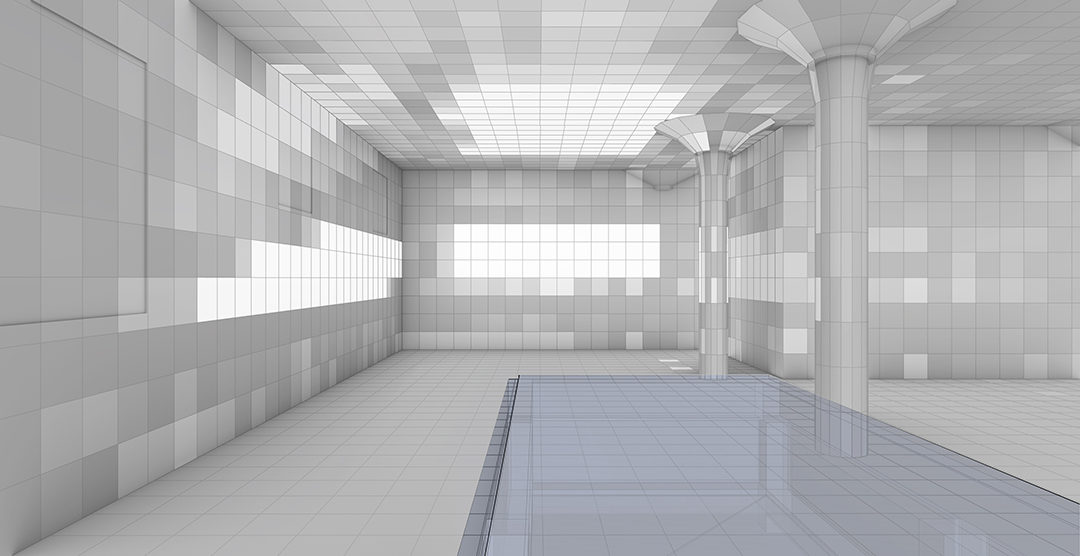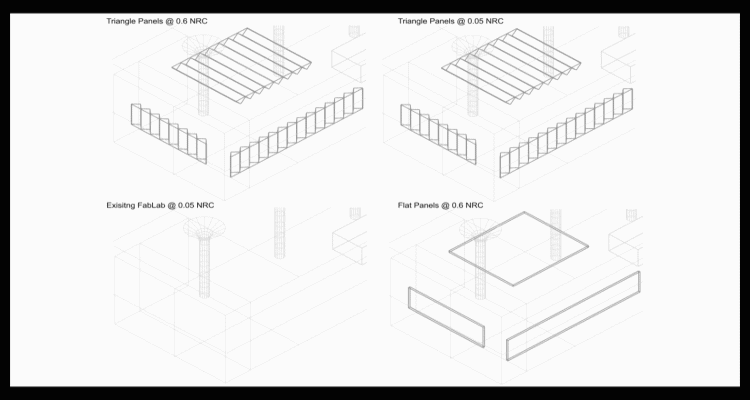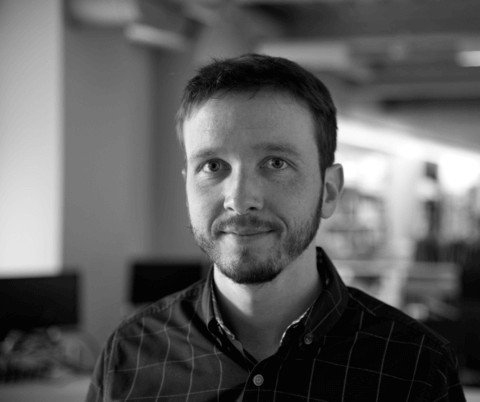In addition to working with our clients on finding solutions to their challenges, we continuously invest in studying the challenges we face in our work environment. In our FabLab in Charlestown, where we build mockups and models for many of our projects, we had an issue with the CNC machine: it makes too much noise. To solve this problem and create a quieter, more enjoyable workspace, we are conducting our own research on improving the aural comfort of our spaces. As part of our research, our investigation included understanding the opportunities and restrictions posed by using certain materials and assemblies as they relate to the acoustic qualities of a space.

Visualization of soundwaves produced by the CNC machine in existing FabLab
Before introducing new forms and materials into the FabLab, we wanted to first understand the best location to achieve aural comfort. Our research thus far has largely focused on acoustic geometries and materials, but even with optimized forms and acoustically absorptive materials, not all surfaces have equal impact on the reflection of sound. A surface’s location within a space could mean it contributes to a significant amount of the reflected sound, or to almost none at all. To reduce the amount of sound near the entrance to the FabLab (where people work while the CNC machine is running), we needed to first understand which locations should be blocked to diminish the amount of reflected sound. First, we determined which existing surfaces are responsible for the majority of the sound reflected toward the predefined working zone. Using a digital model of the FabLab, we divided each of its walls, columns, ceiling and floor into 1’x 1′ panels. Then we used a particle system to emit sound from various points on the CNC machine which travelled towards each panel, and then bounced around the FabLab. Each particle was evaluated once it had bounced off of at least one surface and was rated based on how long / how many subsequent bounces it took each particle to reach the predefined area.

Using the raytracing system, we identified three regions where 100% of the rays hit panels in the working zone. The three regions include a large region of the ceiling, a section of the wall across from the FabLab entrance and a small area directly behind the working zone.
Our next goal was to better understand how much sound reduction would actually occur by absorbing or reflecting most of the sound at one of these identified zones. We placed different geometries at the three areas with different Noise Reduction Coefficients (NRCs). We then measured the resulting decibel change using a series of logarithmic equations, and were able to determine the relative audible change of each intervention.
Decibel change at the work zone compared to 3′ from the CNC machine:


These tests were key in understanding the importance between locating new geometry and locating new materials at specific locations. By developing a novel system of representing sound waves in Rhino, and using time based equations to calculate aggregate decibel values, we were able to slow down time into a 1” per frame animation and deconstruct how the sound dispersed over a 250 millisecond timeframe in the FabLab. Through this study we found that the geometry changes had the most impact on the first bounce and then became significantly less critical as the sound continued to aggregate in the space, whereas the high NRC materials performed significantly better reducing sound in the later bounces. This meant that while the highly specific placement of geometry in relationship to the sound source and work zone is critical, the high NRC material can be placed anywhere near the working zone and will perform roughly the same in all situations.
Ultimately, by focusing the material and geometry change to a roughly 200 SF of surface area intervention in a room that has over 4,500 SF of surface area – accounting for less than 5% of the total surface – we were able to see a direct and measurable difference of adding both high NRC materials and tuned geometry to reduce sound at the working zone. We found optimized placement is critical for a geometric intervention, as is reducing the number of direct sound wave reflections, which contributed to a significant amount of the sound reduced in these tests.
With this new information we plan to craft a solution near the location defined using a combination of geometry and high NRC materials. We will continue to test geometries to find the optimal form in the digital environment before moving forward with the construction and installation of the final product in the FabLab.


